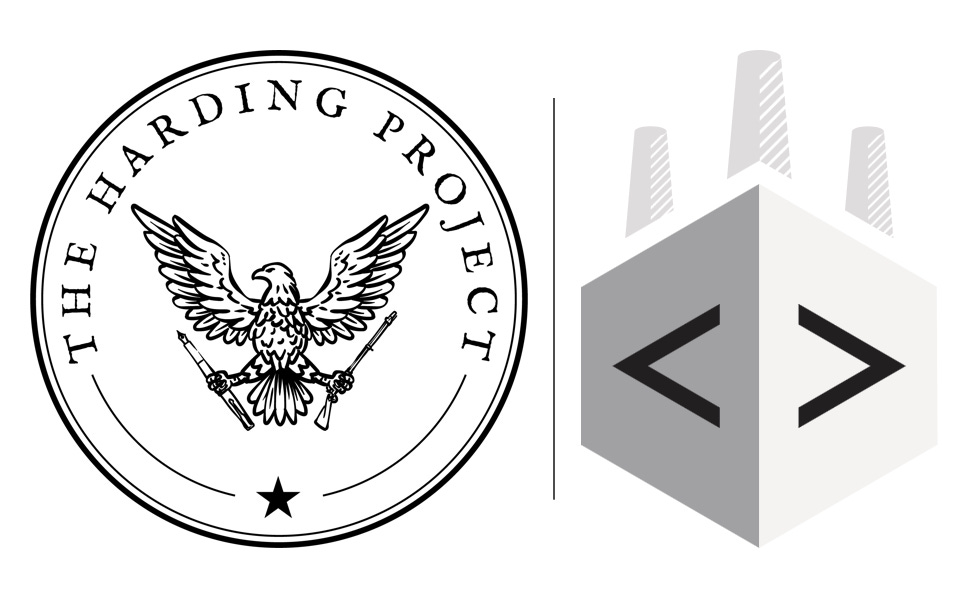Harding × Software Factory
Rescuing Army insights from PDF purgatory
Ever think you’ve run into a brand-new Army problem—only to discover someone solved a version of it 40 years ago? Most of the Army’s challenges aren’t new. Leadership friction, equipment fielding struggles, doctrinal debates—these recur across generations. Unfortunately, insights from our past are often buried, uncited in papers or classrooms, and untouched by today’s search tools.
Our new partnership with the Army Software Factory is about changing that. Together, we’re breathing life into the Harding Project’s archives line of effort, transforming dusty journal scans into searchable, citable, and discoverable articles—because the past has answers.
The Army Software Factory (ASWF), a team under Army Futures Command, trains Soldiers to be full-stack software developers who solve real Army problems. That mission makes them a perfect fit for our goal: making the Army’s historic journals as findable and usable as anything published today. Their tools and process are already at work.
We’ve already completed the scans—more than 5,200 issues from across the Army’s journals. The Software Factory is consolidated them into a working corpus and splitting those PDFs into individual articles, extracting searchable text wherever possible. Once split, the Software Factory will embed the extracted text and structured metadata—journal, volume, author, title, keywords, etc.—directly into the PDF. Harding Fellows will review and clean that metadata for their respective branch journals, bringing expert knowledge and professional judgment to ensure accuracy. Finally, once each file is ready, the Defense Technical Information Center (DTIC) will host the collection, giving every article a permanent home and making the archive visible to tools like Google Scholar and, of course, the Line of Departure.
Here’s where we are in the process:
✅ Scanning complete – 5,200 journal issues digitized by Harding and library partners. No more paper hunting.
🔄 Corpus consolidation (May–June) – Harding and library partners are assembling everything into a central cloud archive.
🔄 Article-level splitting & OCR (May–June) – The Army Software Factory is breaking large PDFs into individual articles and extracting text. For low-quality scans, they’re generating short summaries.
⚠️ Metadata clean-up (June–July) – ASWF will embed journal titles, volumes, issues, author names, and keywords into each PDF. Harding Fellows will review and refine metadata for their respective journals.
▶ DTIC ingest & indexing (August) – A prototype search tool will go live for testing this summer.
🎯 Full public launch at AUSA Annual Meeting (October 13–15) – Articles will be permanently hosted on DTIC, visible in Google Scholar, and usable in Zotero, EndNote, and Line of Departure.
This is more than a technical effort—it’s a professional one. Harding Fellows are curating the professional memory of their branches, helping ensure that each article is labeled in a way that makes it findable and useful to today’s leaders.
By the fall, users will be able to search by article, not just by issue. The PDFs will be fully compatible with citation managers like Zotero and EndNote. And—thanks to DTIC indexing—the entire corpus will be searchable from Google Scholar and other public academic tools. We’ll post a demo in August and complete the public launch by AUSA in October.
The past has answers. With help from the Army Software Factory, the Harding Fellows, and DTIC, we’re making them easier to find.
Zach Griffiths directs the Harding Project.
Paul Abron enlisted in 2014 as a signals intelligence analyst, commissioned as an infantry officer in 2017, and transitioned to data systems engineering in 2021. He now serves as a product manager at the Army Software Factory and holds degrees in mass communications, sociology, and IT management.




This is fantastic. I have noticed a high level of institutional ignorance of past (25+ years ago) concepts, solutions, doctrine, TTPs, challenges, and technical approaches. Not just operations and systems, but in leadership, administration, and fitness. I don't mean this as a 'these young people' attack. It is an inherent challenge in human terrain when the 'now' demands 98% of the focus available. More so, the accelerating speed of information in the past 20 years does a better job blocking awareness of past efforts than the Eagles' offensive line at the SuperBowl. It is not unusual for me to read something by a field grade officer who is clearly intelligent and think 'that issue isn't new'(of course, then I realize I may may be a little older). Maybe the solution died off, maybe it was not implemented, or maybe it wasn't realistic at the time. But the thought, the consideration may still have value for someone approaching an issue now. Creating this resource, in conjunction with our current artificial and automated tools, is a game changer.